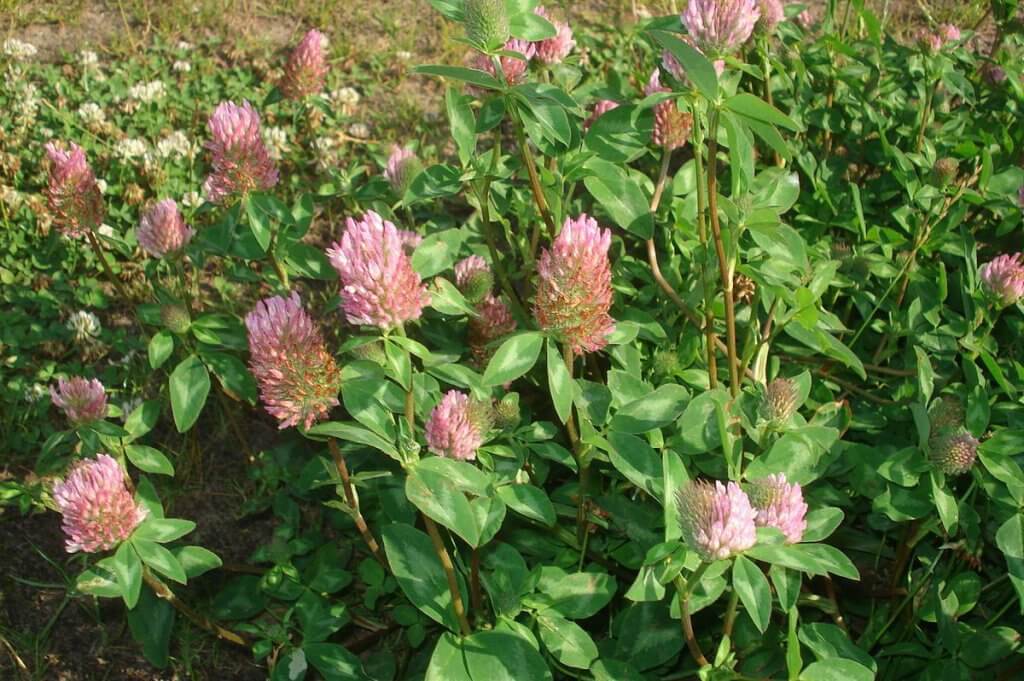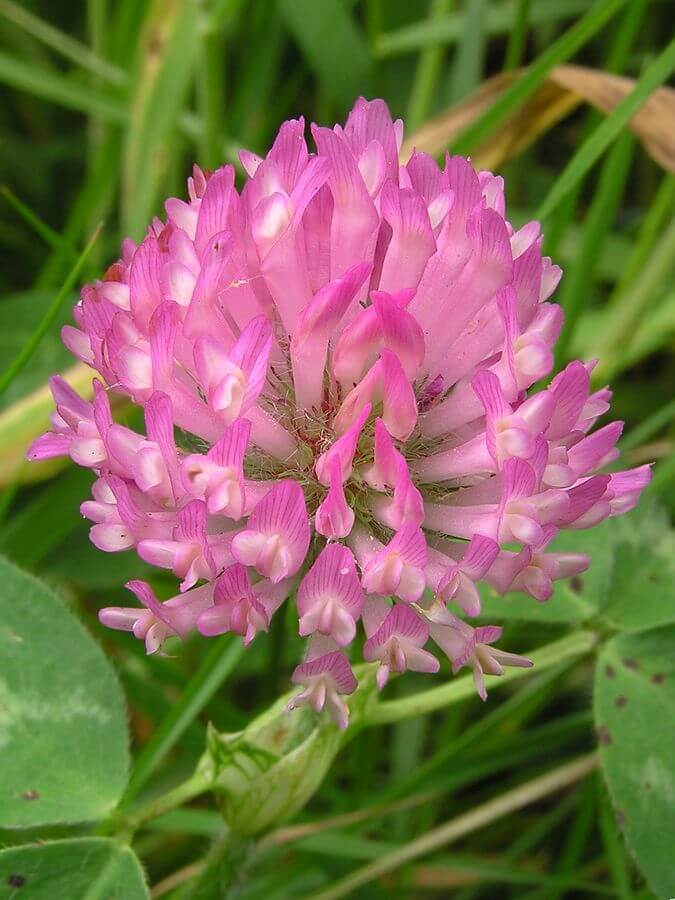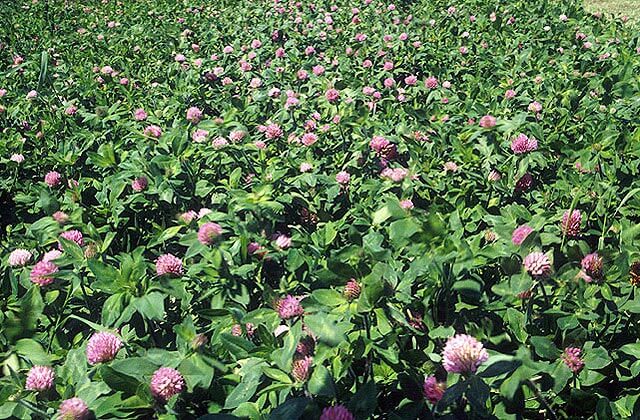
(Photo by: Sanja565658/Wikimedia Commons)
Red clover (Trifolium pratense) is a wild edible that has distinctly beautiful red round flowers. It’s a herbaceous perennial plant that’s native to Europe, western Asia, and northwestern Africa. But, due to its beauty as well as culinary and medicinal uses, this plant has been naturalized in almost every region of the world.
As mentioned previously, this plant has numerous culinary and medicinal uses that vary from each region. For example, in North America, this plant is mostly used as livestock fodder. Meanwhile, in China, it’s a traditional herbal medicine ingredient. Likewise, many other cultures in the world have also incorporated this herb as food and medicine in their daily diet.
Edibility and culinary use
Nearly every part of red clover is edible. Its leaves and seeds can be used in various recipes, but the widely preferred part of this edible plant is its flowers. The round red blossoms have a sweet, bean-like flavor. They can be eaten raw as an edible garnish in salads and other dishes. Aside from that, the flowers are often made into jelly and herbal tea. They can also be dried and ground to make highly nutritious flour. Red clover flour can be used alongside regular flour to add flavor and nutrition in recipes or as a gluten-free substitute.
Red clover leaves taste similar to the flowers, but when cooked, they have a vanilla-like flavor. They can be eaten raw or cooked. These leaves can be tossed in a salad, added into soups, or cooked like other greens. Dried leaves can be ground to make a gluten-free flour or chopped and sprinkled on different dishes to boost their flavor.

(Photo by: Tony Wills/Wikimedia Commons)
Lastly, its seeds can be sprouted and used in salads or stir-fry dishes. Red clover sprouts’ nutritional value is said to be comparable to that of alfalfa sprouts. Avoid eating unsprouted seeds. The seeds contain a compound which can interfere with your body’s ability to digest protein. This compound will only be destroyed after the seeds have sprouted.
Health benefits
Red clover is a great source of essential nutrients including vitamins A, B1, B2, B3, and C as well as calcium, chromium, magnesium, phosphorous, potassium, selenium, sodium, and zinc. This herb also contains antioxidants and isoflavones, compounds which act like estrogen in the body.
This herb can treat various ailments, such as indigestion, upset stomach, cold, cough, asthma, and bronchitis. Due to its isoflavones content, red clover is also great for treating menopausal symptoms in women, such as hot flashes, as well as prevent osteoporosis. It can relieve PMS symptoms and reduce menstrual pain as well. Aside from feminine health, this herb can also help maintain cardiovascular health. It can lower cholesterol levels and control high blood pressure. Lastly, due to its high antioxidants content, red clover consumption may prevent cancer.
Cultivation
Red clover is a terrific addition to any garden. Its round, red flowers will add a cheerful splash of color to your garden while also attracting pollinators, such as bumblebees. This plant is also a wonderful nitrogen fixator which means it can increase your garden’s soil fertility. And of course, you’ll also have a reliable source of a medicinal and culinary herb.
Luckily, it’s not hard to cultivate this plant. It can grow in poor soil, but for optimum growth, make sure to plant it in well-drained, fertile soil. It prefers partially shaded area but can tolerate full-sun exposure as well if the weather is not overly hot.

(Photo by: R. R. Smith/Wikimedia Commons)
You might be able to get a red clover plant from your local nursery. In that case, simply roughen the soil to prepare it and transfer the plant to its permanent location in your garden. But, if you can’t find any red clover plants, try buying the seeds instead. Prepare the soil in a similar way and sow the seeds in late spring. Water them generously and they should germinate within 5 to 7 days.
The plants can be harvested within 40 to 60 days after sowing. This plant usually lasts around 3 years and it will produce its maximum yield in its second year. You can harvest most red clover plants twice in a year, once before mid-bloom and once more between August and September.
Cautions
Consuming red clover may cause some adverse side effects, such as headache, nausea, rash, muscle pain, acne, bloating, constipation, diarrhea, breast tenderness, and vaginal spotting.
Additionally, consuming this herb may slow blood clotting and increase the chance of bleeding. So, use with caution and avoid it at least two weeks before a scheduled surgery.
Then, due to its isoflavones content, pregnant and breastfeeding women should not consume this herb in medicinal amounts. Isoflavones act like estrogen and might disturb essential hormonal balances during pregnancy and the nursing period. There are also some concerns that overconsuming red clover for an extended period of time may reduce fertility.
Conclusion
Red clover has so much to offer to you besides its beautiful appearance. Including this amazing herb in your daily diet can improve your health immensely. Start foraging wild red clover in meadows and grassy pasture. Or, if you’re unable to find this wild edible in your area, cultivate them in your garden and reap its benefits!
---------------
Writen by Cornelia Tjandra
Cornelia is a freelance writer with a passion for bringing words to life and sharing useful information with the world. Her educational background in natural science and social issues has given her a broad base to approach various topics with ease. Learn more about her writing services on Upwork.com or contact her directly by email at cornelia.tjandra@gmail.com
Many of our readers find that subscribing to Eat The Planet is the best way to make sure they don't miss any of our valuable information about wild edibles.
See our privacy policy for more information about ads on this site






